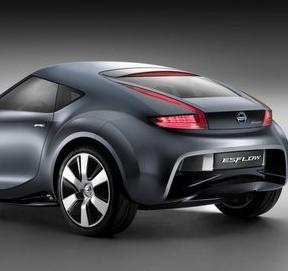
For more than a century, cars have allowed billions of people to travel farther, faster and more efficiently. Cars help increase the strength of the world’s economic powers and determine modern social and cultural contours. At the same time, they also bring accidents, congestion, pollution, and inexorable oil dependence.
Therefore, our challenge is to increase the benefits of the car, reduce (and ultimately eliminate) the damage caused by the car, so that future travel by car will be cleaner, more efficient, safer and feasible for everyone. Therefore, if the auto industry is still a tool for progress, we must cooperate with other industries and governments to cooperate in the following three areas: safety, environment, and price.
Road safety is a big problem. Every day, more than 3,000 people die from car-related accidents. Low-income countries have half the world’s automobiles, but they account for more than 90% of fatal traffic accidents. India has four times fewer cars than France and about 20 times more road-related deaths -- that is, the average number of accidents per vehicle is 80 times. However, security is improving. In Europe, although the number of cars has doubled, the road death toll has fallen by half. One reason is the introduction of technologies such as ABS, airbags, and power stability control. Technology that is currently under development can even eradicate car-related fatalities.
One innovation in this area is automatic driving. Renault and Nissan are currently working together to develop technologies that can be used to predict, detect, and prevent collisions, and to more effectively protect drivers and pedestrians. This is even more valuable for people with reduced mobility, such as elderly or disabled drivers.
However, with such technological breakthroughs, they need the support of the government. To achieve the goal of “zero death†in our lives, policymakers must participate in the early stages of development.
The automotive industry can also make important contributions to the environment. Fifteen years ago, the Renault-Nissan Alliance evaluated the environmental impact of its cars on a life-cycle basis. This study examines the impact of our use of raw materials, the impact of automobile exhaust on public health (especially in congested urban areas), and the impact on overall greenhouse gas emissions. 23% of the world's greenhouse gases come from the automotive industry.
As a result of this assessment, Renault-Nissan invested more than 4 billion euros in zero-emissions technology. Today, we are the only automotive group that produces a full range of zero-emission vehicles and light commercial vehicles on a large scale. Renault and Nissan have combined and sold more than 100,000 such cars worldwide, more than all the other major car manufacturers combined.
The bigger task is to integrate these vehicles into more efficient and cleaner power grids. In addition, local and national governments should work with the auto industry to integrate zero-emission vehicles into national transportation infrastructure. If this is achieved, we believe that the car is expected to achieve zero environmental impact in the foreseeable future.
However, better health and safety cannot (and need not) come at the expense of developing countries. The people of developing countries hope to enjoy the fruits of prosperity enjoyed by the people of the developed countries. In 1999, Brazil, Russia, India, and China accounted for only 8% of global car sales; by 2012, the total sales of these four countries had reached 35% of the global total. And this proportion will certainly rise further.
One reason for this remarkable growth is that automakers have developed cheaper cars for cost-conscious emerging middle classes. The Renault-Nissan CMF-A platform designed and manufactured in India will clear the way for the promotion of cheap cars in all developing countries.
In the past century, automobiles have had a tremendous impact on our political, economic, social and cultural life. The global sales of the automotive industry are even higher than the GDP of the sixth-largest economy, and provide job opportunities for more than 50 million people worldwide. The future of the automotive industry is closely related to the future of the world economy. The challenge now is to invent a new car so that it can remain a proud and safe pride totem for decades to come.
Eva Mosaic Sticker,Colorful Mosaic Tiles,Mosaic Sticker Art,Creative Diy Handmade Mosaic
NINGBO NEW SUCCESS ARTS AND CRAFTS CO.,LTD , https://www.craftandtoy.com
